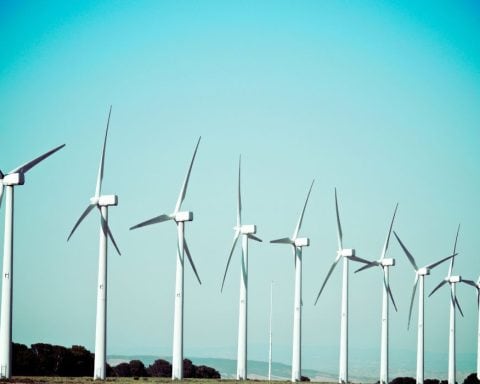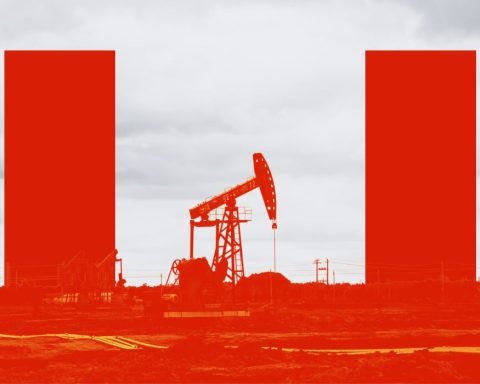Home of the Haisla First Nation, the town of Kitimat sits at the end of a 90-kilometre fjord in a remote corner of northern British Columbia. It is a focal point for Canadian ambitions to join the ranks of major exporters of liquefied natural gas (LNG) to energy-hungry Asian markets.
On one stretch of the Douglas Channel shoreline is the site of LNG Canada, a partnership of international corporations including Shell PLC and PetroChina. The LNG Canada project currently under construction and the TC Energy pipeline that will supply it with gas were jointly billed as the largest private-sector investment in Canadian history – made possible with $5.4 billion in subsidies from British Columbia and $275 million in support from Ottawa.
Further along the shore is the planned home of Cedar LNG, a smaller yet-to-be-green-lit project that is majority owned by the Haisla with a minority stake held by Calgary-based Pembina Pipeline Corp. Privately owned Woodfibre LNG is also under construction at Squamish.
All told, 24 would-be LNG developers have received natural-gas export permits from the federal energy regulator, though many of those will not proceed. Canada is well behind competitors like the United States and Australia in the race to supply a fossil fuel market that has limited growth prospects over the medium term. Advocates of Canadian LNG exports say that sending gas to Asian markets will help them reduce reliance on coal, and thereby decrease global carbon emissions.
It is a much-disputed argument. Several recent studies challenge the industry position. Researchers suggest that the leakage of methane throughout the LNG life cycle can eliminate any greenhouse-gas (GHG) advantage gas has over coal at the point of final combustion. And some question whether growing reliance on LNG could slow the deployment of less carbon-intensive alternatives.
Still, producers want the federal government to include exported LNG as part of its climate change strategy, including policies for preferential financing. Ottawa is currently developing a transition taxonomy – essentially a guideline as to which types of investments are appropriate in the transition to a net-zero economy. In a report last March, the federally appointed Sustainable Finance Action Council (SFAC) said that only projects that are aligned with a net-zero pathway should be included in the taxonomy, without clarifying whether natural gas falls into that group. The government now faces a concerted lobbying effort to green-light expanded LNG capacity. Sources tell Corporate Knights that the minister’s office has delayed commenting on SFAC’s recommendations because of concerns over LNG.
West Coast dreams of LNG-fuelled prosperity rest on a shaky foundation of questionable assumptions.
Methane leakage
Numerous recent studies suggest that a major expansion of LNG exports from Canada would contribute to the growing climate crisis, rather than mitigate it as proponents claim. Both the International Energy Agency (IEA) and the United Nations Environment Programme warned this past fall against expansion of fossil fuel infrastructure that could lock in carbon emissions for decades.
Cornell University ecosystem scientist Robert Howarth recently concluded that LNG exported from the U.S. to Asia or Europe has higher carbon intensity than local coal use due to the leakage of methane – a powerful warming agent – throughout the LNG supply chain, but particularly during shipping. To address the urgency of the climate crisis, the world must “move away from any use of LNG as a fuel as quickly as possible, and immediately stop construction of any new LNG infrastructure,” Howarth wrote in a paper released in November. He’s been an outspoken critic of natural gas for more than a decade, facing years of harassment for his stance. But he’s not alone in his critiques. Researchers at RMI – the Rocky Mountain Institute – published a paper last July in which they concluded that methane leakage rates as low as 0.2% can eliminate any carbon advantage natural gas would have over coal-fired energy.
Hundreds of studies using an array of measurement techniques have concluded that the industry’s methane emissions are often wildly underestimated. Methane can leak from a number of points in the natural gas cycle, from extraction and processing to transportation and power generation facilities – and there are no reliable government systems in place to comprehensively track the leaks.
Globally, the IEA has estimated that methane emissions are 70% higher than industry reports. Carleton University’s Energy and Emissions Research Lab recently completed a census of methane emissions from upstream oil and gas production. Led by engineering professor Matthew Johnson, the researchers measured emissions at 3,500 oil and gas facilities and 5,600 wells. As Carleton reported, “Johnson and his team discovered that the actual quantity of methane produced by Canada’s oil and gas sector in the provinces of British Columbia, Saskatchewan and Alberta is consistently far higher than what was previously reported.” Alberta’s facilities, in particular, were found to be underreporting by nearly 50%.
At the COP28 climate summit in early December, the federal government announced new draft regulations that it says would result in a 75% reduction in methane emissions in the oil and gas sector from 2012 levels by 2030 while acknowledging that further work is required to accurately quantify methane emissions. Slashing methane emissions – along with better tracking – would help Canadian gas producers make the environmental case versus coal. However, natural gas still produces CO2 emissions and expanding supply and demand is inconsistent with net-zero plans.
A paper co-authored by University of Calgary professor Sara Hastings-Simon suggests that newly built natural gas assets would become white elephants if the world succeeds in reducing its demand for fossil fuels as governments have pledged to do. At the same time, growing LNG imports in Asia could slow the adoption of lower-carbon alternatives, including renewable energy, the researchers concluded.
LNG at best represents a short-term opportunity, Hastings-Simon and her colleagues say. By the 2030s, the costly new LNG export terminals will either become stranded assets or lock in emission growth that takes us in the wrong direction on climate change.
In a special report released ahead of the United Nations climate summit in November, the IEA forecast that global demand for natural gas will peak by 2030 and could decline precipitously over the following two decades if countries rise to the challenge of global warming. The Paris-based agency – which advises wealthy countries on energy policy – urged against a major expansion of any fossil fuel infrastructure, noting that the world would need to reduce natural gas demand by 20% by 2030 and 75% by 2050 if we’re to limit warming to 1.5°C. “The ‘Golden Age of Gas,’ a term coined by the IEA in 2011, is nearing an end,” said the IEA report.
“Successful clean energy transitions require much lower demand for oil and gas, which means scaling back oil and gas operations over time – not expanding them,” Fatih Birol, the agency’s executive director, says in the report. Rapid expansion in LNG supply over the past 10 years will be sufficient to supply the market and compete against pipeline gas in Asian markets, the agency says.
Essentially, building LNG infrastructure represents a bet against climate success.
Industry optimism
Still, backers of LNG Canada, Woodfibre and Cedar LNG remain optimistic. TC Energy’s $14.5-billion 670-kilometre Coastal GasLink pipeline that will ship supply from the gas fields of northeastern B.C. to the coast is 98% complete, according to the company. Construction at Woodfibre and the LNG Canada site is well underway; LNG Canada expects the first LNG shipments in 2025. Cedar’s owners – the Haisla and Pembina Pipeline Corp. - are aiming to make a final investment decision in the coming months.
Canadian LNG producers maintain that they have the lowest carbon intensity of any facilities in the world. LNG Canada says its phase-one facility will have a life-cycle GHG footprint 65% lower than the global average for the industry and 28% below the best performers. That figure is based on carbon intensity in the Montney gas field of northeastern B.C., as well as “highly efficient processes” and use of renewable power from B.C. Hydro. Carleton’s Energy and Emissions Research Lab also concluded that stronger regulation and monitoring in B.C. has meant that methane intensities are approximately four times lower on average than neighbouring facilities in Alberta, though there are variations between facilities.
LNG Canada’s partners are considering plans to fully electrify phase two of the project, should they decide to proceed. Though that would require completion of a $3-billion transmission project to bring additional power to Kitimat for commercial and residential use. B.C. reportedly wants Ottawa to cover half the cost of the line.
First Nations’ support
Many First Nations leaders in B.C. support the expansion of the LNG industry, seeing it as a path to economic development. That support remains, despite the much-publicized battles over the Coastal GasLink pipeline that will feed LNG Canada and Cedar. Land defenders led by hereditary chiefs of the Wet'suwet'en First Nation have blocked construction on the pipeline right-of-way, prompting a series of arrests by the RCMP. Still, elected First Nations leaders continue to support LNG expansion and, in some cases, have equity positions in projects.
I think [ownership of LNG development] is one of the solutions to helping our people to get out of poverty.
Karen Ogen, First Nations LNG Alliance
Karen Ogen – who served as elected chief of the Wet'suwet'en for six years – leads the First Nations LNG Alliance and travelled this fall to Beijing. In a telephone interview, Ogen says Asian nations have communicated their desire for LNG supply from Canada to replace coal, and alliance members are eager to benefit. “For 150 years, we were not included when major projects went through our territories and have not benefited from them,” Ogen says. “I think [ownership of LNG development] is one of the solutions to helping our people to get out of poverty.”
The First Nations communities are looking for loan guarantees from Ottawa to help finance their equity participation in resource projects, including LNG facilities and fossil fuel pipelines. In her fall economic statement in November, Finance Minister Chrystia Freeland announced that the federal government would develop a loan guarantee program but provided no details. In a release, the First Nations Major Projects Coalition said Ottawa should not exclude fossil fuel projects from the financing plan, but rather allow First Nations governments to pursue the projects they deem appropriate.
That approach could leave Canadian taxpayers on the hook for massive loans to finance risky fossil fuel projects that are designed to last 30 years. “There is no justification for the Government of Canada to be subsidizing any new oil or gas production, including LNG, no matter the project’s owner,” says Julia Levin, associate director of national climate policy at Environmental Defence.
There is no justification for the Government of Canada to be subsidizing any new oil or gas production, including LNG, no matter the project’s owner.
–Julia Levin, associate director of national climate policy at Environmental Defence.
Meanwhile, advocates on both sides of the LNG debate are waiting with bated breath to see where the federal government lands on LNG in its transition taxonomy – will it make the cut or not. Behind the scenes, insiders have told Corporate Knights off the record that the finance minister’s office has been holding up the taxonomy’s release until LNG gets the green light.
In an email, SFAC chair Kathy Bardswick says that individual projects will have to be assessed on their own merits. Individual LNG projects could qualify “if there is a credible link to transition,” she says. “But there is no scenario that will pass scrutiny related to ‘new exploration.’”
In a report for the First Nations Climate Initiative, economist Robert Johnston concludes that Canadian LNG could qualify for the transition taxonomy if methane emissions are minimized and the result tracked and verified. But that’s a lot of ifs, which, as of yet, remain unresolved.
Back at the COP28 climate summit, 50 companies (including LNG Canada partners Shell and Petronas) signed on to an agreement that commits them to “near zero” methane emissions from their oil and gas production operations. Notably, the commitment covers production but not processing at liquefaction plants or transportation in pipelines or ships.
Given all the uncertainties, it’s unclear whether Canadian-based producers will be able to benefit in the marketplace from any carbon advantage they claim. Will buyers opt for supplies from a producer that can certify its low GHG intensity? Will they be willing to pay a premium? Would they sell credits from reducing any coal use that the additional LNG supply might allow? To date, there has been little evidence of that type of energy trading.
At most, Canada may add another LNG plant or perhaps two. Investment decisions are looming on Cedar LNG and LNG Canada’s phase two. They will depend on a host of political, environmental and market-based factors.
One thing is clear, however: a major expansion of Canadian LNG production runs counter to climate goals and entails a significant risk of big financial losses down the road for the producer, their First Nations partners and, potentially, for Canadian taxpayers.
Shawn McCarthy is an independent writer focused on energy and climate change. He is also a senior counsel at Sussex Strategy Group.





